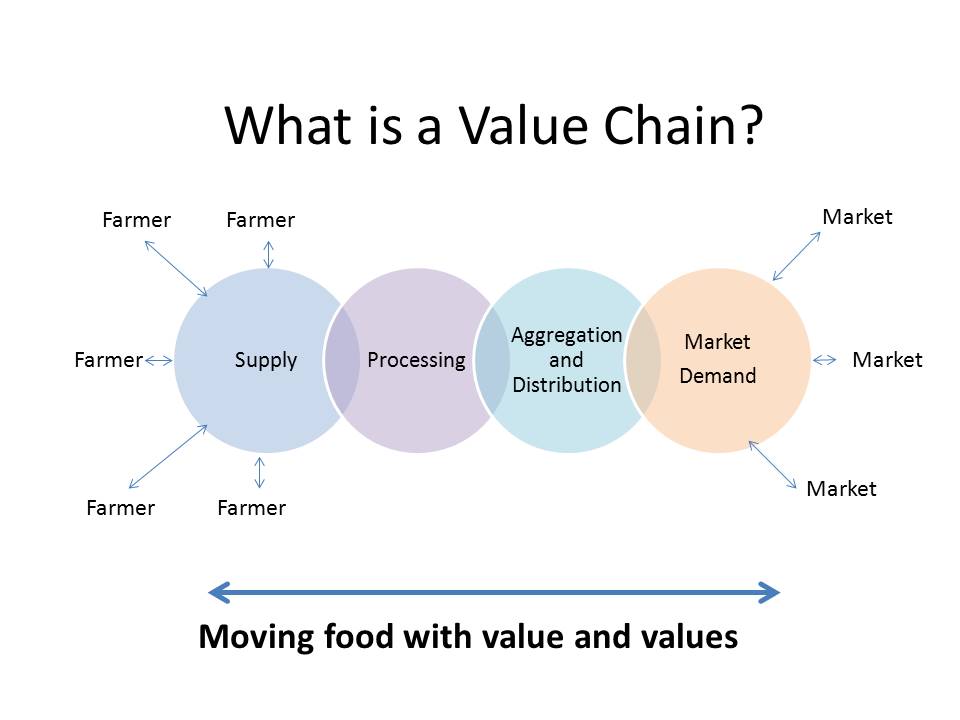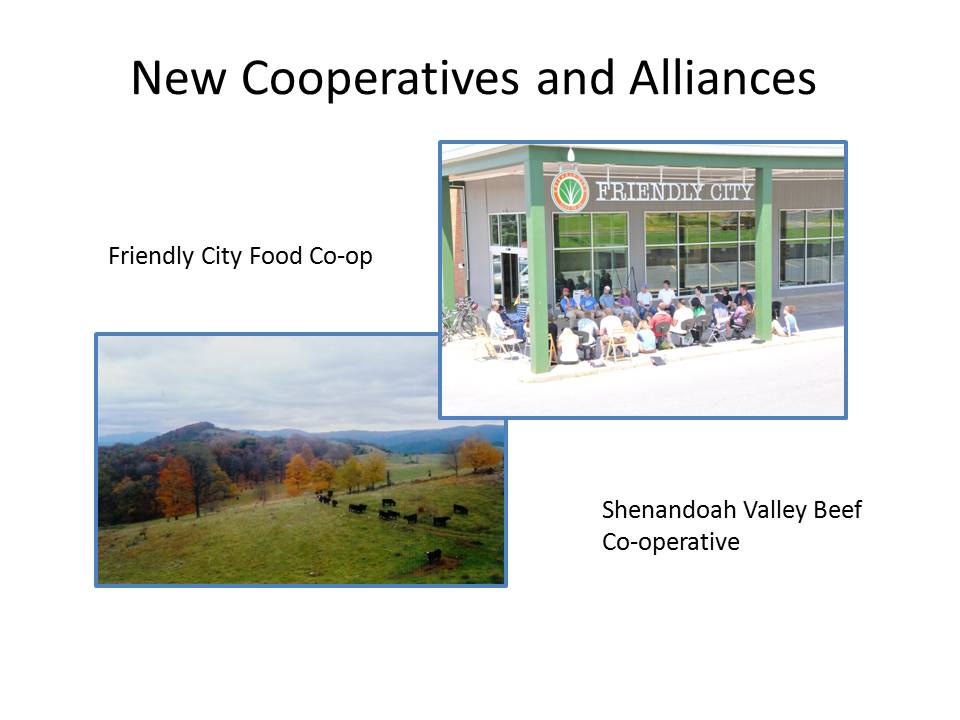For Virginians to eat foods produced and processed as close to their homes as possible can we encourage movement and momentum towards a goal of 10% local food production and consumption in the next 5 to 7 years.
 Can we encourage greater availability and accessibility of good Virginia foods by setting the following goals?
Can we encourage greater availability and accessibility of good Virginia foods by setting the following goals?
• 5% local purchasing and sourcing for local and regional grocery stores
• 10% local purchasing and sourcing for county and city public schools
• 15% for local and regional hospitals, retirement communities, and other state-run institutions or agencies
• 15 – 20% for Area Boards for the Aging
• 25% for local restaurants
• 25% for universities and colleges (e.g., Emory University in Atlanta as part of their sustainability initiative has set goal for 75% by 2015)
Certainly, increasing the amount of actual food dollars invested in local agriculture through time would be preferable, but setting a percentage of purchasing budgets as a goal to gauge incremental change and growth is a starting point.
Strategic directions for enhancing the availability and accessibility of good local food might include:
1. Producer and Processor Development, Growth, and Capacity
- Build and expand capacity of existing producers and processors,
- Increase number of producers and increase availability of processors in different sectors (i.e., meat, dairy, poultry, fruit, vegetables, and value-added)
- Increase number of locally or strategically located processing facilities throughout Virginia
- Increase and engage farmer and producer participation and leadership at all levels
2. Values-Based Food Supply Chain Development
- Building and fostering resilient business relationships between producers, processors, distributors, and retailers that sustainably and equitably that meets the goals and aligns with the values of each participant, while allowing for an ongoing productive and profitable business relationships (See Agriculture of the Middle and Association of Family Farms)
 3. Market and Food System Infrastructure Development
3. Market and Food System Infrastructure Development
- Integrating and expanding market relationships,
- Building a market framework that meets the needs of producers, distributors, retailers, and consumers
- Building different components of the food system and platforms for market infrastructure
- Providing key market and infrastructure information in a timely and cost-effective way
4. Business Planning and Food Enterprise Development
- Work directly to create and support the development of specific business opportunities
5. Alliances of Farmers/Producers and Aggregation of Farm Products
- Work to build alliances among aggregate farmers/producers and to facilitate the aggregation of farm products so they enter with market power and significant volume of product to gain leverage and market position
- Aggregate in lot and volume sizes that the market demands
- Package food to meet market standards and address the growing concern for traceability
- Examine new cooperative models, alliances and flexible management networks.
 6. Logistics, Distribution and Efficiency
6. Logistics, Distribution and Efficiency
- Address logistics and distribution opportunities at all scales and levels of local and regional food system.
- Create critical links between production and the market.
- Identify major opportunities and low hanging fruit for innovation and new models.
7. Access to Land, Labor, Capital and Information
- Address short, mid, and long-term barriers to access to land, labor, and capital.
8. Political and Organizational Education, Outreach and Capacity
- Educate key decision makers and stakeholders on the importance of food system work so it is part of political and legislative discourse and long-term community investment.
- Align existing and new organizational capacity around the critical food system strategies and directions like the Virginia Farm to Table Plan.
9. Shift Cultural Values, Purchasing Behaviors and Increase Consumer Demand
- Work to educate consumers and deepen their values on the importance buying and supporting local/regional sustainable foods and food system efforts.
- Change behaviors and expand consumer demand for sustainable local and regional food.
10. Food System Research, Development and Evaluation
- Analyze emerging food system strategies, context, and assets
- Map of existing demand and supply
- Build and invigorate with new business models and processes
- Partner with area universities and business schools
- Research what applied strategies could have the largest market impact and could be easily leveraged with existing resources.
This blog post was revised from work of the Shenandoah Valley Food and Farm Work Group on ways to scale up the regional food system and Shenandoah Valley Buy Fresh Buy Local. The outline has been adapted from the Good to Grow presentation by Ron Doetch, Executive Director, Michael Fields Agricultural Institute, as part of the Food and Fitness Initiative sponsored by the W.K. Kellogg Foundation.

